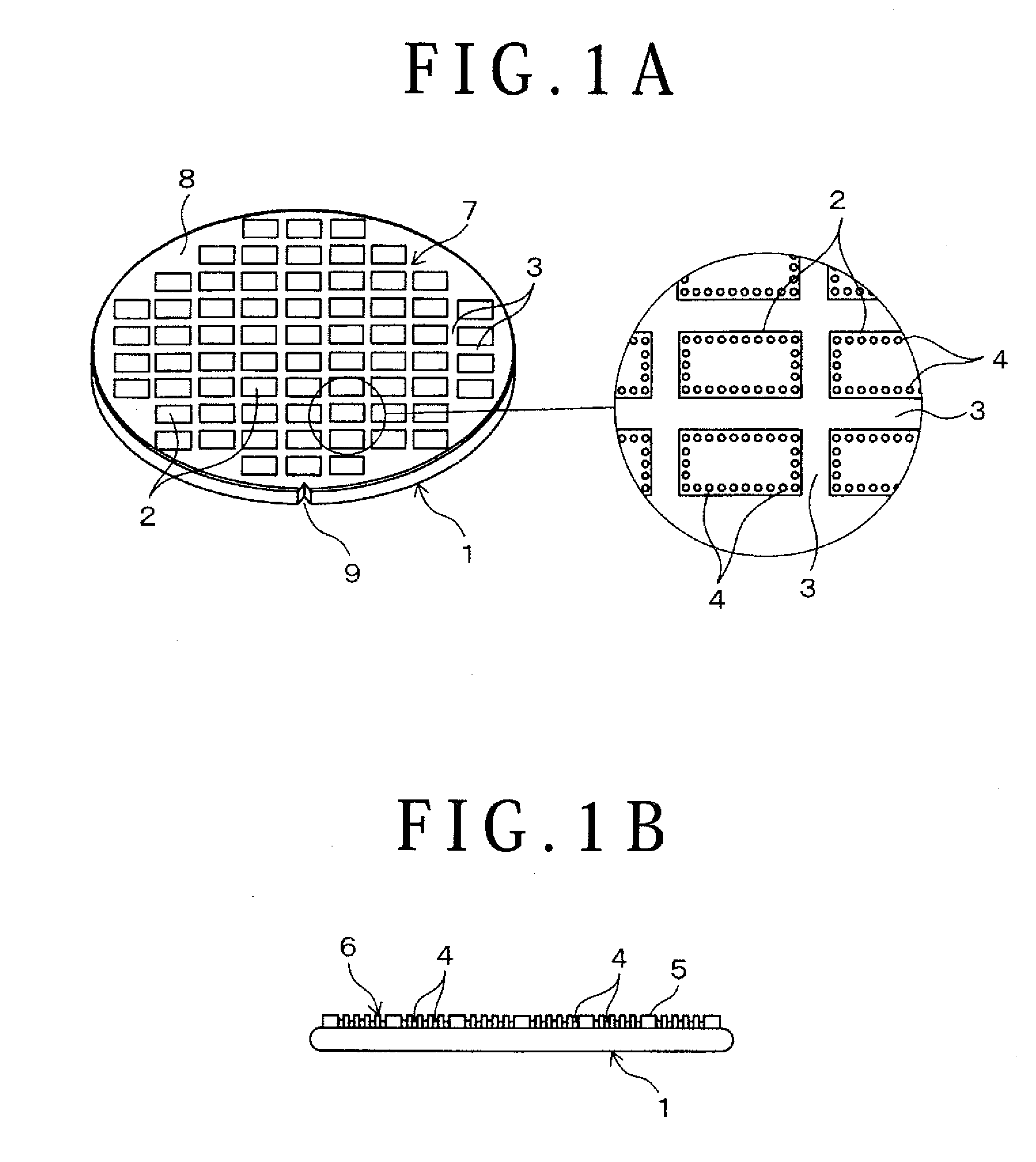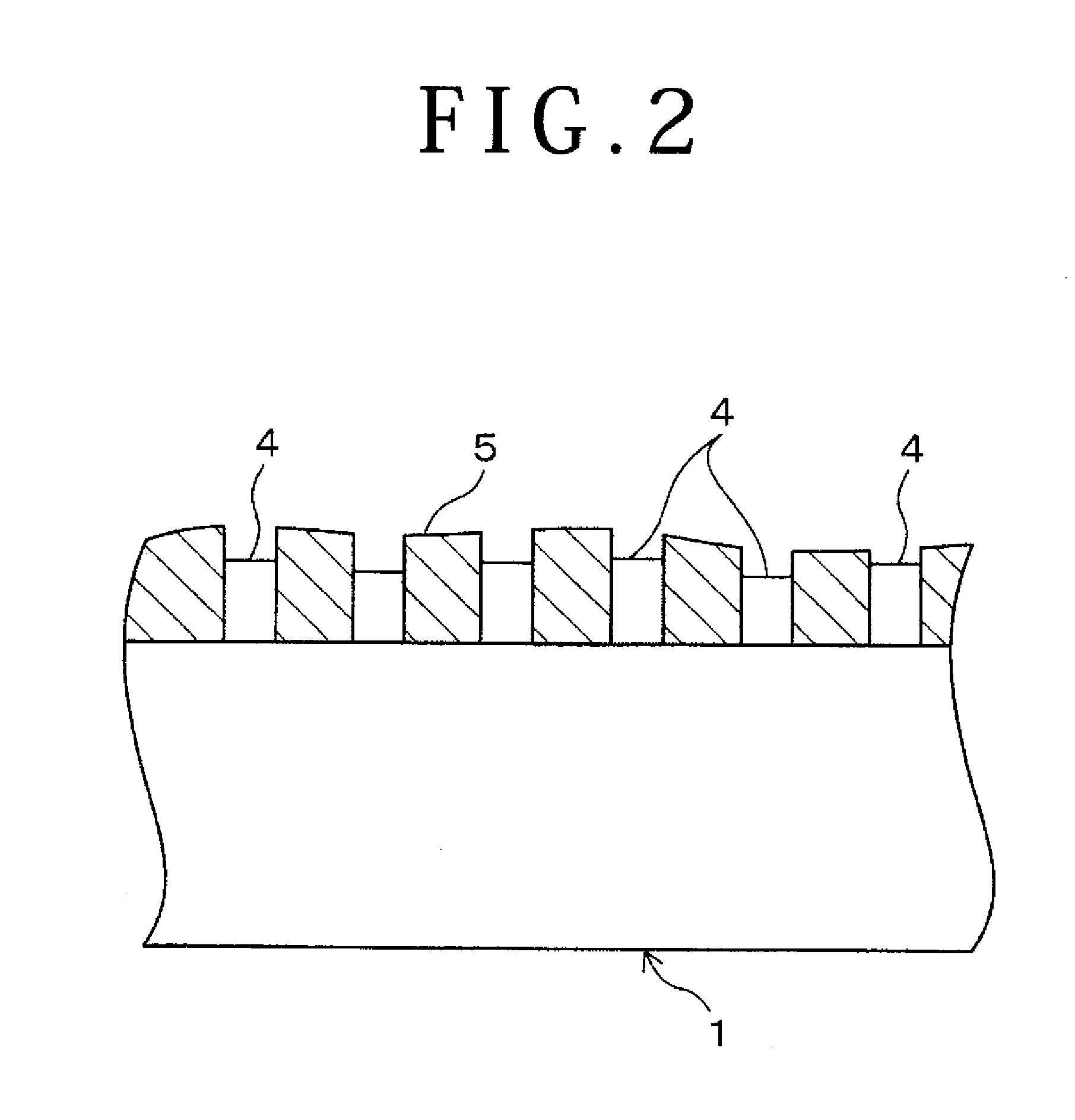Method of machining substrate
a substrate and machining technology, applied in the direction of grinding drives, manufacturing tools, lapping machines, etc., can solve the problems of warping of wafers and breaking of wafers
- Summary
- Abstract
- Description
- Claims
- Application Information
AI Technical Summary
Benefits of technology
Problems solved by technology
Method used
Image
Examples
first embodiment
[2] Method of Machining Wafer in First Embodiment
[0037][2-1] Appendant Part Cutting Step
[0038]FIG. 3A shows a wafer 1 similar to that shown in FIGS. 1A and 1B. First, a cutting step is carried out to cut the surface of the appendant part 6 of the wafer 1 to uniformly adjust the height of the electrodes 4. In this case, the appendant part 6 to be cut is tip parts of all the electrodes 4 and the resist layer 5, and the cutting is conducted until they become flush with each other and the electrodes 4 come to have the desired height.
[0039]For the cutting, a cutting apparatus 10 shown in FIG. 5 is used preferably. According to the cutting apparatus 10, the back-side surface of the wafer 1 is sucked directly onto a suction surface of a vacuum chuck type chuck table (suction table) 20 to hold the wafer 1, and a tool 37 of a cutting unit 30 being rotated is pressed against the appendant part 6, whereby the surface of the appendant part 6 is cut. FIG. 3B shows the wafer 1 in the state in the...
second embodiment
[3] Method of Machining Wafer in Second Embodiment
[0068]Now, a method of machining a wafer according to a second embodiment of the present invention will be described below referring to FIG. 8. In the second embodiment, an appendant part cutting step is divided into a first appendant part cutting step of cutting only the surface of a resist layer 5 of an appendant part 6 in such a range as not to reach electrodes 4, and a second appendant part cutting step of cutting both the tips of the electrodes 4 and the resist layer 5 to make them flush with each other. Besides, a back-side surface grinding step is carried out between the first cutting step and the second cutting step. In conducting the cutting and the grinding, the above-mentioned cutting apparatus 10 and grinding apparatus 50 are used.
[0069][3-1] First Appendant Part Cutting Step
[0070]FIG. 8A shows a wafer 1 similar to that shown in FIGS. 1A and 1B. First, the back-side surface of the wafer 1 is sucked directly onto a suction...
PUM
| Property | Measurement | Unit |
|---|---|---|
| height | aaaaa | aaaaa |
| thickness | aaaaa | aaaaa |
| thickness | aaaaa | aaaaa |
Abstract
Description
Claims
Application Information
 Login to View More
Login to View More - R&D
- Intellectual Property
- Life Sciences
- Materials
- Tech Scout
- Unparalleled Data Quality
- Higher Quality Content
- 60% Fewer Hallucinations
Browse by: Latest US Patents, China's latest patents, Technical Efficacy Thesaurus, Application Domain, Technology Topic, Popular Technical Reports.
© 2025 PatSnap. All rights reserved.Legal|Privacy policy|Modern Slavery Act Transparency Statement|Sitemap|About US| Contact US: help@patsnap.com



